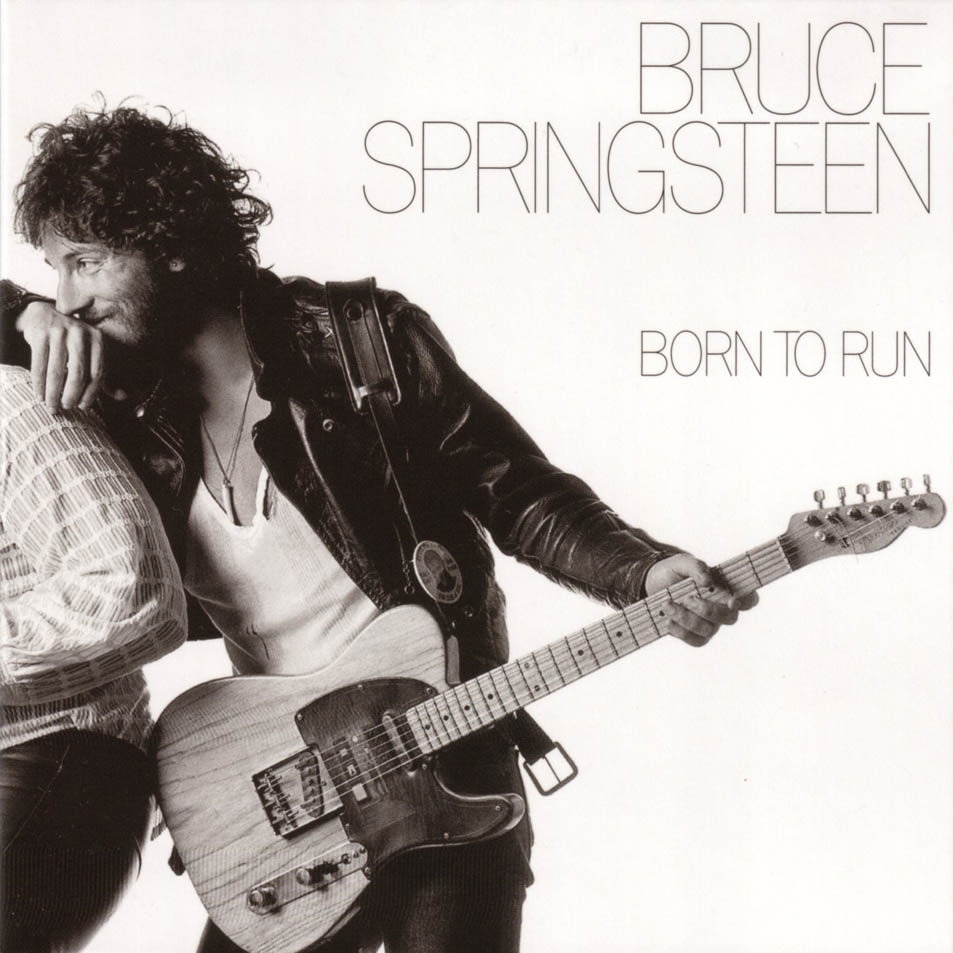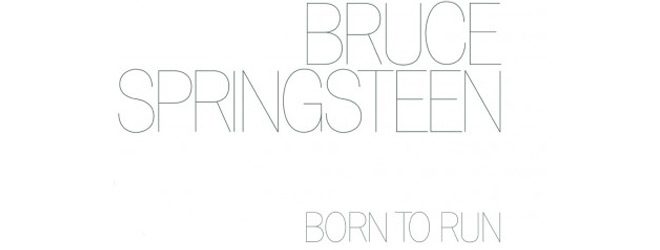Ludwig van Beethoven wrote symphonies in the early 1800s, performed by countless orchestras, they are considered masterpieces that will continue to be appreciated for centuries. More recently, the rhythm and lyrics of the big bands of Glenn Miller, Duke Ellington, and Benny Goodman from the 1940s have been embraced by every generation since. With the 1975 release of the album, Born To Run, Bruce Springsteen and The E-Street Band are destined to be included in this immortal company.
Almost a year and half after the band’s first two albums, 1973’s Greetings From Asbury Park and The Wild, The Innocent, And The E-Street Shuffle, Springsteen completed the album that would make him a household name. He spent nearly six months alone on the title track of Born To Run. The song became not just his biggest hit, but a chant for thousands of teenagers who connected with his Jersey Shore garage-band sound and the lyrics that spoke to them in ways no other Rock band had. Springsteen (vocals, lead and rhythm guitars, harmonica, percussion) was joined by Roy Bittan (piano, Fender Rhodes, organ, harpsichord, glockenspiel, background vocals), Clarence Clemons (saxophones, tambourine, background vocals), Danny Federici (organ and glockenspiel), Garry W. Tallent (bass guitar), Max Weinberg (drums), Ernest “Boom” Carter (drums), Suki Lahav (violin), David Sancious (piano), and Steven Van Zandt (background vocals, horn arrangements). Furthermore building the sound, he also enlisted Wayne Andre (trombone), Mike Appel (background vocals), Michael Brecker (tenor saxophone), Randy Brecker (trumpet, flugelhorn), Richard Davis (double bass), and David Sanborn (baritone saxophone). The albums playlist reads as a Who’s-Who of immortal Rock anthems.
The album’s opening song, “Thunder Road,” sets the mood. Starting slow, Springsteen’s slightly nasal twang tells a story. Like most of his music, his work is not a repeated refrain with a mind-numbing chorus that quickly becomes irritating. His songs are stories, each one having a unique tale to tell. As the lyrics take us on the journey, the music builds into what Springsteen himself refers to as, “a wall of sound.” “Tenth Avenue Freeze-Out” follows, bringing us on another journey. This one has more of a city feel, it is the first that showcases the horn section that is one of the E-Street band’s signature sounds. Clarence Clemons sax is prevalent throughout.
That big sax sound continues in “Night;” one of many songs that connect generations of motorheads. Days of frustration and being trapped in a dead-end life, the listener’s live for the nights when they can break free. “…at the light, as it changes to green. With your faith in your machine off you scream into the night.” We race off with him as the music swells and Clemons’ sax drives us off into that night.
The tempo drops for “Backstreets.” Keeping with the now-familiar theme of living on the streets and counting on our cars to be our refuge from a troubled world, the piano heavy sound moves the listener to that place. Springsteen’s song are emotional, connecting us in more than just the words, were brought to those streets, we feel the emotion from the singer’s perspective. In that, we are no longer alone in our desperation. Therein lies Springsteen’s true genius.
“Born To Run,” more than just the title track, this song is a shout-out to all the disconnected youth who are just realizing that life may be nothing more than a repetitive loop of work and sleep. “In the day we sweat it out on the streets of a runaway American dream. At night we ride through the mansions of glory in suicide machines.” Blasted from countless speakers in an infinite number of cars, the song spoke to us, giving us a mantra to live by. Many lived this life, worked the cars, cruised the streets, punching the throttles when the lights changed, racing through those nights along with Springsteen. Calling it an anthem does not seem like a strong enough word for what it was, and continues to be. Even though those original listeners are now middle-aged greying grandparents, they have never lost that connection to those days. It should be noted that as Springsteen aged, his songs mirrored the feelings and relationships felt by those early fans. In songs like “Glory Days,“ released in 1984, he reminisced about the time in his life when the emotions described in “Born To Run” were all that mattered in their sheltered lives.
The next song, “She’s The One,” is perhaps the most complex song on the album. Springsteen blends, piano, sax, drums, guitar, and harmonies into a hard ballad of desperate love. The slowest song in the collection is “Meeting Across The River.” The album’s most fleshed-out story, the listener is transported into a dark world of desperation and potential danger. One feels for the song’s main character and fears for his safety and that of his accomplice, Eddie. It is a beautifully told and sung story. There is real emotion playing out in the tune.
The closing song, “Jungleland,“ is the longest on the album. Another song that starts slowly and builds as the story is told, it is a fitting end to a perfect album with all the emotion and universal connections our younger selves felt forty years prior.
Springsteen’s arrangements draw listeners into the worlds he creates with the stories within his songs. His voice, sometimes slightly off-key, sometimes losing breath at the end of a line or note held too long, is never covered with auto-tune, or unnecessary harmonies. His voice is raw and uncensored, just as his lyrics; his voice is felt as much as it is heard.
In the forty years since Born to Run’s release, Springsteen and his bandmates have grown into some of the most recognizable names in the music, and television, industries. In 2014, they were, deservedly, inducted into the Rock and Roll Hall of Fame. The success of the album provided the opportunity for Springsteen to write songs that became hits for other bands. The Pointer Sisters hit number 2 on the charts with “Fire.” Manfred Mann, Patti Smith, and Southside Johnny all had success in later years with music penned by Springsteen. One of the reasons for his success as a songwriter, and his key to connecting to an audience, was said best by a record producer who heard them early on, “[Springsteen puts] more words in some individual songs than other artists had in whole albums.” Springsteen wrote – and continues to write -compelling stories that connect with an audience of listeners yearning for a voice that understands them. In Springsteen, they find that unique voice, one that knows what they are feeling and can convey it in soulful and passionate song. In the ensuing years, the band members of The E-Street Band grew from their humble beginnings at the shore and “somewhere in the swamps of Jersey.”
His close friend and fellow guitarist, Stevie Van Zandt, has had success as an actor on the popular HBO series, The Sopranos, and in his own -critically acclaimed -Netflix original series, Lilyhammer. Replaced in the mid-1980s by guitar virtuoso, Nils Lofgren. Van Zandt returned in 1995 and continues to appear when they tour. He hosts a weekly radio program, Little Steven’s Underground Garage, the name hints at the popularity of Springsteen’s music in the garages and basement bands of their fans.
The E-Street band’s drummer, “Mighty Max” Weinberg was with Bruce from the beginning. He stopped touring in 1993 and, as the leader of The Max Weinberg 7, appeared on the Late Night with Conan O’Brien television show from 1993 until 2009 when the show stopped filming in New York City.
Clarence Clemons, the band’s iconic sax player passed away in 2011. At 6’5” (195.5cm), it is easy to see how he earned the nickname, The Big Man. Until his death following complications from a stroke, Clarence continued to perform with the E-Street band as well as other big-name acts. He played on Aretha Franklin’s “Freeway Of Love” and had a hit single duet with Jackson Browne with “You’re A Friend Of Mine” as well as releasing several solo albums.
Springsteen has produced fifteen more albums since that summer of ’75 – both solo and with E-Street – which continue to resonate with his core audience, as well as garnering new ones who hear his early songs played by their parents, and their grandparents before them.
Whether one’s generation lives centered around the gas-guzzling muscle-cars of the 1970’s, the front-wheel drive turbocharged imports of today, or the future’s hot-rodded electric/rocket cars, these songs speak to legions of young people trying to make sense of the world in which they are doomed to exist. For the past four decades, and dozens more to come, Springsteen and his brand of American Hard Rock will continued to deliver, “‘Cause baby, we were born to run.”






No comment